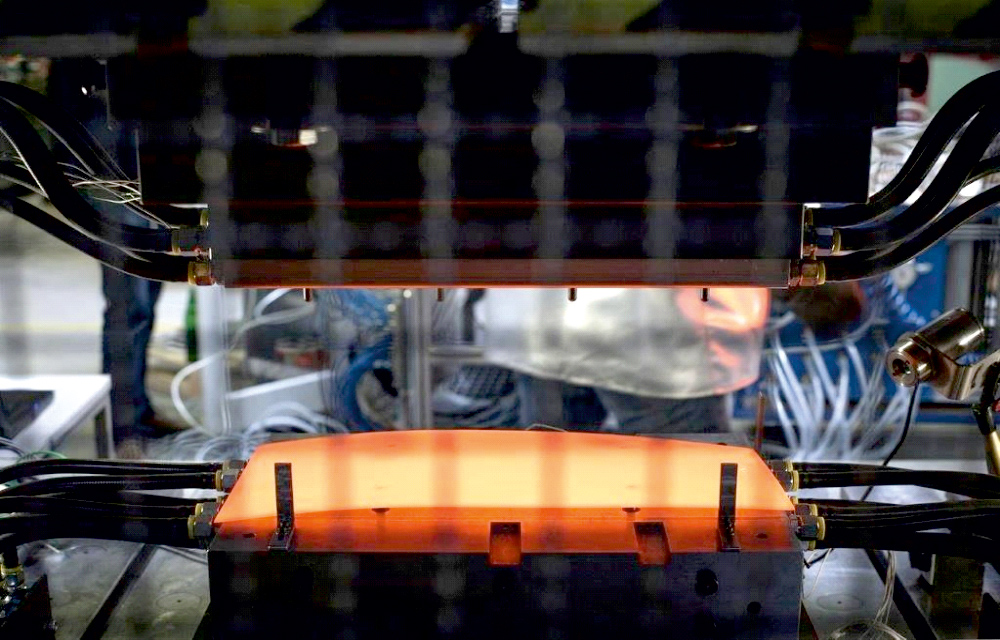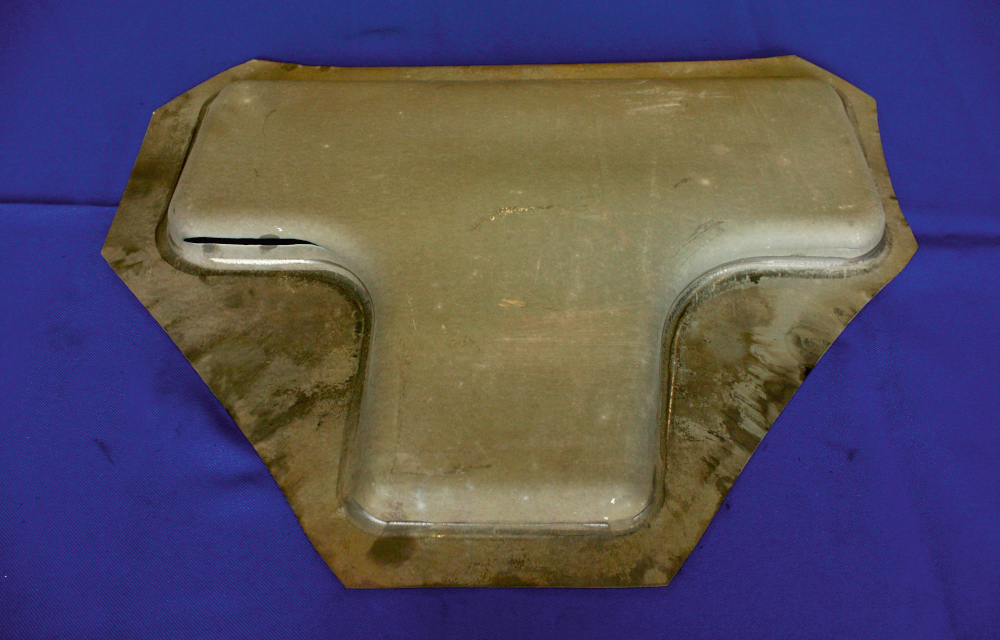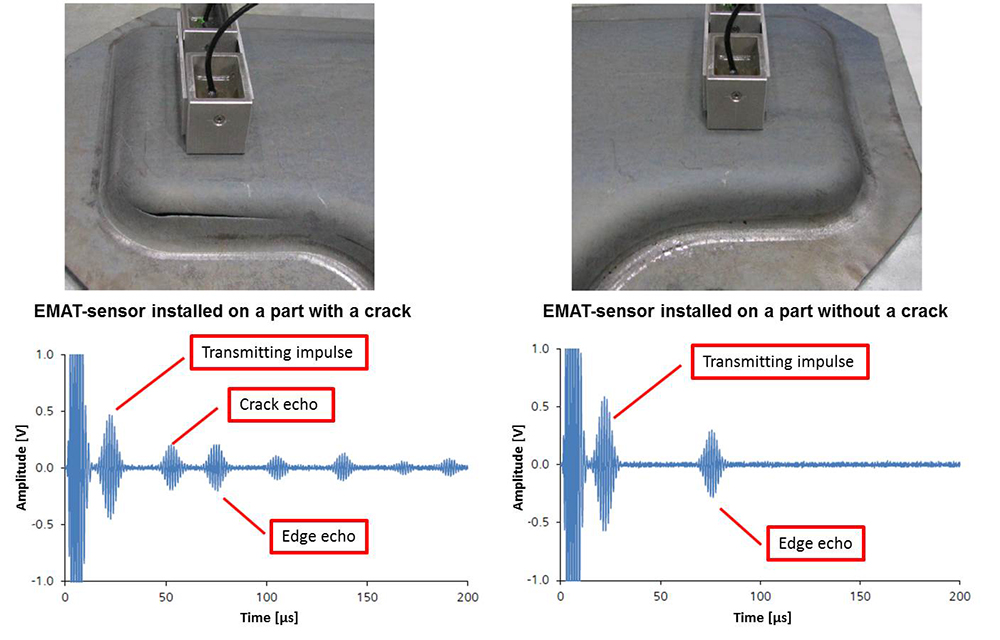Car body parts such as A- and B-pillars are often manufactured using a technology called hot stamping. Before forming, the steel is heated and then cooled down quickly during the forming process – making it very hard. The disadvantage is that hot stamping sporadically causes cracks and neckings (see Figure 2). For lack of automated testing methods, parts with defects can end up in the final assembly process.
To solve the problem, researchers of the Institute of Forming Technology and Machines (IFUM) and of Fraunhofer Institute for Nondestructive Testing (IZFP) are currently developing a novel testing concept for hot-stamped parts. There are several methods available, for example a method based on electromagnetically generated ultrasound (EMAT). A potential crack in the part reflects the signal and creates a so-called crack echo (see Figure 3).
Another research objective is to find the causes of part failures – and to develop strategies against crack formation.


